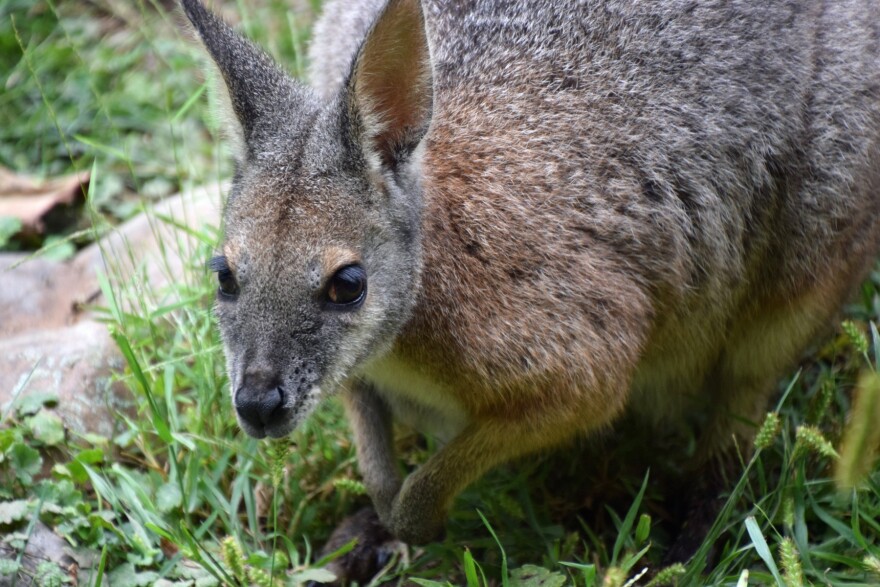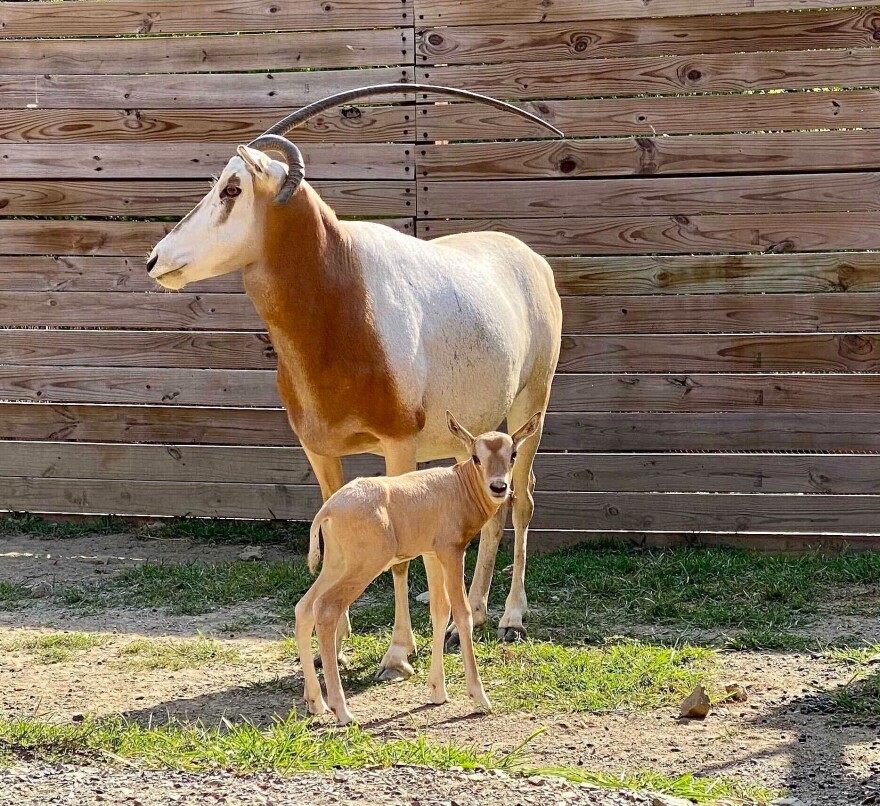- The Lehigh Valley Zoo announced the birth of a scimitar-horned oryx
- It's part of a species survival plan to help boost endangered species
- Zoo officials also reported the death of a wallaby
NORTH WHITEHALL TWP., Pa. — A scimitar-horned oryx calf became the newest resident of the Lehigh Valley Zoo this month — part of a plan to boost a species that's designated as extinct in the wild.
But the good news was tempered by news of the death of the zoo's 8-year-old Tammar wallaby Mose, officials announced.
The yet-to-be-named calf was born Aug. 4 and is the 10th oryx calf born at the zoo since 2014, according to a news release from the zoo.
“Since bringing this species to Schnecksville in 2007, the zoo has served as a successful breeding facility for this endangered antelope."Lehigh Valley Zoo, announcing the birth of a scimitar-horned oryx
“Since bringing this species to Schnecksville in 2007, the zoo has served as a successful breeding facility for this endangered antelope,” officials said.
“In the 1980s, the scimitar-horned oryx was declared extinct in the wild. Since that time, global efforts have been ongoing to aid in their conservation and reintroduction to the areas in Africa that they once roamed.”
Officials at the zoo, at 5150 Game Preserve Road in Schnecksville, announced the calf’s birth to mom, Donnar, last week.
The calf is part of a species survival plan, which helps to manage and conserve threatened or endangered species populations.
However, the announcement was tinged with sadness because zoo officials also reported the death of Mose the tammar wallaby, which unexpectedly passed away in early August.
“Mose will be dearly missed by all staff and guests,” officials said.
What is a scimitar-horned oryx?
Once widespread across North Africa, “the scimitar-horned oryx are currently considered extinct in the wild due to a combination of widespread over-hunting, habitat loss and persistent drought,” according to the Smithsonian's National Zoo & Conservation Biology Institute.
At home in the desert heat, the animal can tolerate an internal body temperature of 116 degrees Fahrenheit, according to the institute. That lets them conserve water.
Gestation lasts about nine months, resulting in a single calf weighing 20 to 30 pounds, according to the zoo’s news release. Calves have a yellow coat, without the distinguishing marks of an adult, and start to wean before 4 months old and become fully independent.
“For comparison, adult males weigh between 300 to 400 pounds and adult females weigh between 200 to 300 pounds,” officials said. “Both males and females have long, thin horns, which can grow more than three feet in length.”
After the birth, Donnar and her calf spent several weeks apart from the herd for bonding, nursing and rest, zoo officials said.
The veteran mother “has successfully raised several other calves and has proven herself to be a nurturing and protective mother.”
As always, the animal care and veterinary teams have been diligent in monitoring all the antelope to see how they are handling the new addition.Lehigh Valley Zoo officials
“The oryx herd was integrated with the eland herd this past spring, making this the first time a calf has been born in the zoo’s multi-species setting," officials said.
“As always, the animal care and veterinary teams have been diligent in monitoring all the antelope to see how they are handling the new addition.”
The calf is at least the second scimitar-horned oryx to be born at the zoo in the past year. In November, officials announced the birth of Eclipse to mom, Too Haute.
Remembering Mose
Tammar wallaby Mose, along with his half-sibling, Dwight, came to the zoo in 2015 from Lincoln Children’s Zoo in Lincoln, Nebraska. They lived together in the habitat adjacent to the emus.

“Like many wallabies, Mose was timid and a bit skittish, but he would make his way over to animal care staff for his diet and to investigate new enrichment items,” officials said.
“He also enjoyed taking naps in his exhibits’ bamboo forest, where he was very good at hiding in plain sight and having an occasional snack on nearby bamboo leaves."Lehigh Valley Zoo release, talking about the late Tammar wallaby Mose,
“He also enjoyed taking naps in his exhibits’ bamboo forest, where he was very good at hiding in plain sight and having an occasional snack on nearby bamboo leaves.
“During the construction of Habitat Madagascar, the mob of red kangaroos moved in with the wallabies, creating a dynamic environment for the two species.”
The zoo’s first new exhibit since 2017, Habitat Madagascar opened in May. The 1,600-square-foot building holds a year-round lemur and tortoise exhibit.
The smallest species of wallaby, tammars populations are stable and designated “of least concern,” according to the International Union for Conservation of Nature Red List of Threatened Species, also known as the IUCN Red List.
“LV Zoo officials are hopeful to introduce another wallaby to both the habitat and to Dwight in the upcoming months,” according to the release.


